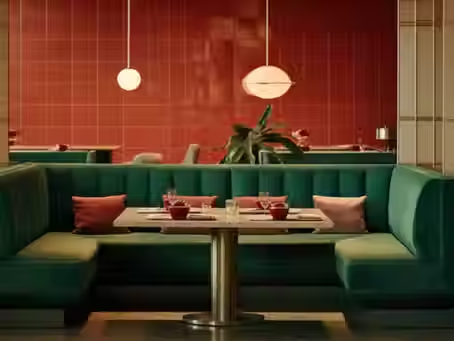The Power of Color: How It Affects Mood, Energy & Everyday Life
- Sarina gurung
- Jul 15
- 3 min read
Updated: Jul 31

Color is everywhere. It influences our thoughts, emotions, and even behaviors in ways we often don’t realize. From the clothes we wear to the spaces we live in, color plays an important role in setting the tone of our environment.
Ever wondered why some rooms make you feel relaxed while others energize you? The answer lies in color psychology, a fascinating field that explores how different colors impact human emotions and well-being.
In this blog I would like to dive into the importance of color in daily life, How color affects mood and emotions, The energy and vibes each color brings and How to use color intentionally in your home and surroundings.
Why Color is Important in Daily Life
Color influences our mood, perceptions, and even decision-making. Businesses use color to shape customer experiences, hospitals use it to create calming environments, and interior designers harness its power to transform homes.
Color’s Influence on Human Psychology:
Emotional Impact: Colors trigger different emotional responses, making us feel happy, calm, energized, or even stressed.
Physiological Effects: Studies show that colors can increase heart rate (like red) or lower stress levels (like blue and green).
Behavioral Influence: Certain colors encourage productivity, social interaction, or relaxation, which is why office spaces, restaurants and spas use specific shades.
Choosing the right color for your environment can improve mental well-being, enhance creativity, and create a space that feels just right.
Color is more than just decoration it’s a powerful force that shapes our emotions, behaviors and even daily experiences. From the calming effect of a blue sky to the energizing warmth of a golden sunset, colors influence how we feel, think and interact with the world around us.
Why Color Matters
Color psychology is a well-researched field that explores how different shades impact our mood and decisions. This is why brands interior designers, and even hospitals carefully choose their color schemes to evoke specific feelings. Colors can make a space feel warm or cool, spacious or intimate, inviting or intimidating.
In homes, the right color palette can turn a house into a sanctuary, creating harmony and balance while enhancing well-being. But color isn’t just about aesthetics it can deeply affect your mental state, productivity and emotions.
How Color Affects Mood and Emotion
Color has a direct impact on our brain and nervous system. Some colors stimulate energy and excitement, while others encourage relaxation and focus. Bright, saturated shades often feel lively and playful, while muted, earthy tones bring a sense of grounding and calm.
Studies show that color can:
The Energy of Colors in Daily Life
Beyond mood, colors influence how we experience spaces and situations. For example:
A bright, colorful café feels lively and encourages conversation.
A minimalist, neutral-toned office promotes focus and efficiency.
A dimly lit, deep-colored lounge creates an intimate, cozy setting.
This is why businesses, designers, and artists use color intentionally to create the right energy in a space.
Using Color to Enhance Your Life
Choosing the right colors for your environment is about aligning them with your lifestyle and emotional needs. Ask yourself:
Do you want a space that feels energetic and social? Are you looking for a calm and peaceful retreat?Do you need an environment that boosts focus and creativity?
By understanding color psychology, you can create a space that truly supports your well-being and goals. Whether you’re designing a home, choosing an outfit, or redecorating your workspace, color is a silent force that shapes your everyday experience.
Color is a force that affects us all whether we recognize it or not. By being mindful of how different shades influence our emotions, we can intentionally design environments that uplift, energize, or soothe us, depending on our needs. So, next time you’re decorating, think about how color can enhance your space and improve your mood.
Happy Designing 🤎
Sarina
Founder/Interior Designer
Cosy Ghar Interior










Comments